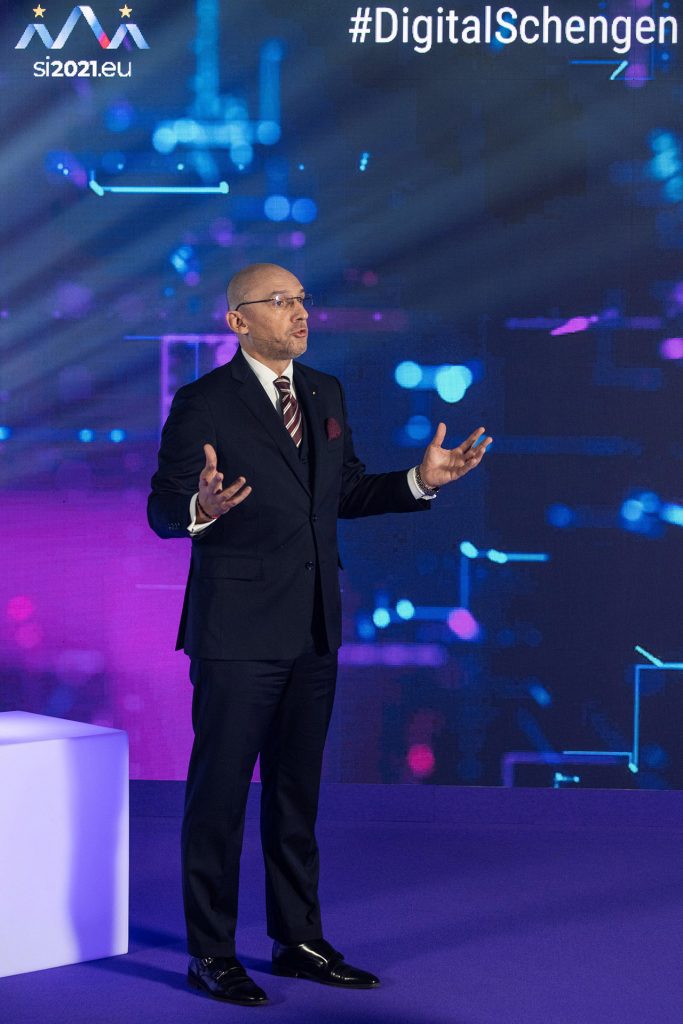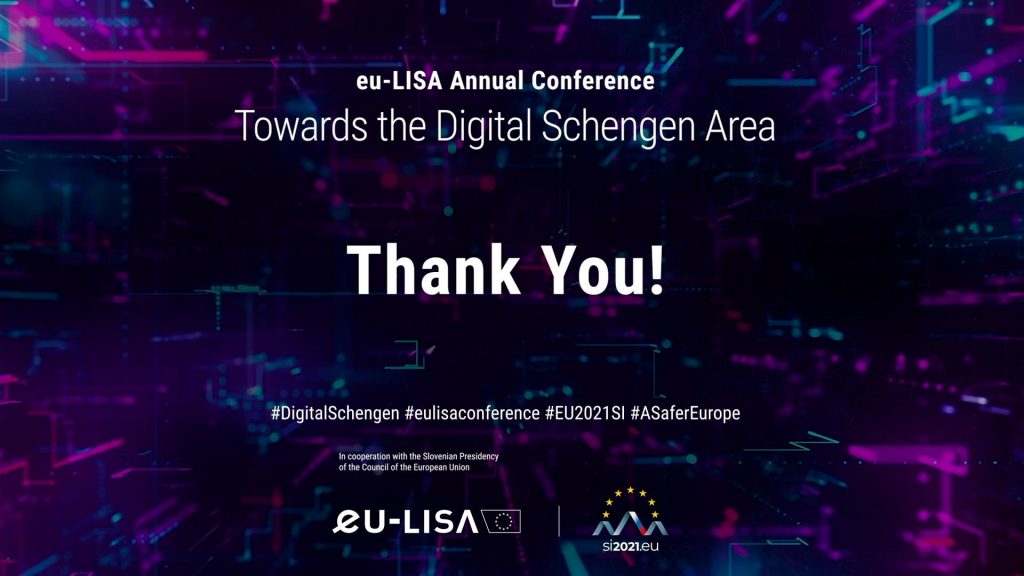Towards the Digital Schengen Area
eu-LISA
Conference Report
2021
eu-LISA conference report 2021
10.00 – 10.20
Opening remarks
Ms Ylva Johansson
Commissioner for Home Affairs, European Commission
Mr Aleš Hojs
Minister of the Interior of the Republic of Slovenia
Mr Juan Fernando López Aguilar
Chair of the European Parliament’s Committee on Civil Liberties, Justice and Home Affairs (LIBE)
Mr Krum Garkov
Executive Director, eu-LISA
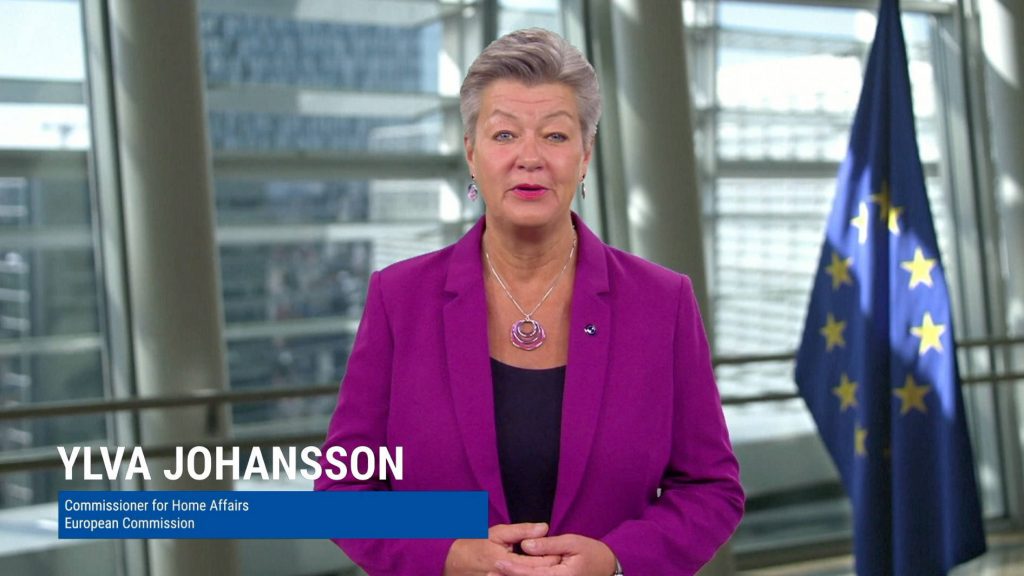
Commissioner Johansson began by thanking eu-LISA for being a crucial backbone of the Schengen Area, one of the biggest achievements of European integration. The Commissioner highlighted the importance of building a new IT architecture and making further progress with the development of the Entry/Exit System (EES) and European Travel Information and Authorisation System (ETIAS), as these facilitate the creation of the most modern border management system in the world. Currently, not all Member States were up to speed, but Commissioner Johansson stressed that reaching interoperability by the end of 2023 could be done if all stakeholders worked hard together. The Commissioner said the state-of-the-art border management ecosystem would make Europe a safer place and would be seen and felt across the world.
Mr Hojs started by saying that digitalisation had become the key for the provision of security in the widest possible sense. The minister considered it significant that despite some delays in the implementation of interoperability, the last Council meeting in Luxembourg had given a strong signal that the project had strong support from all Member States. Using the potential of artificial intelligence (AI) technologies was one of the priorities of the Slovenian presidency, and work was ongoing in negotiating a new AI regulation. In the field of AI, Mr Hojs underlined the importance of ensuring adequate safeguards and control mechanisms. He wished everyone success in developing and applying new solutions for a safer, more secure and just European Union.
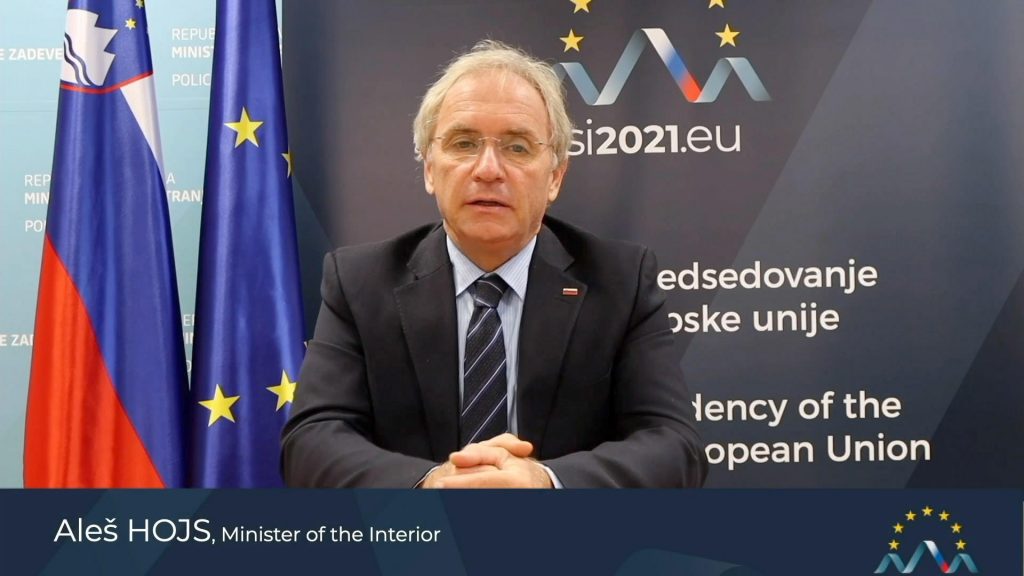
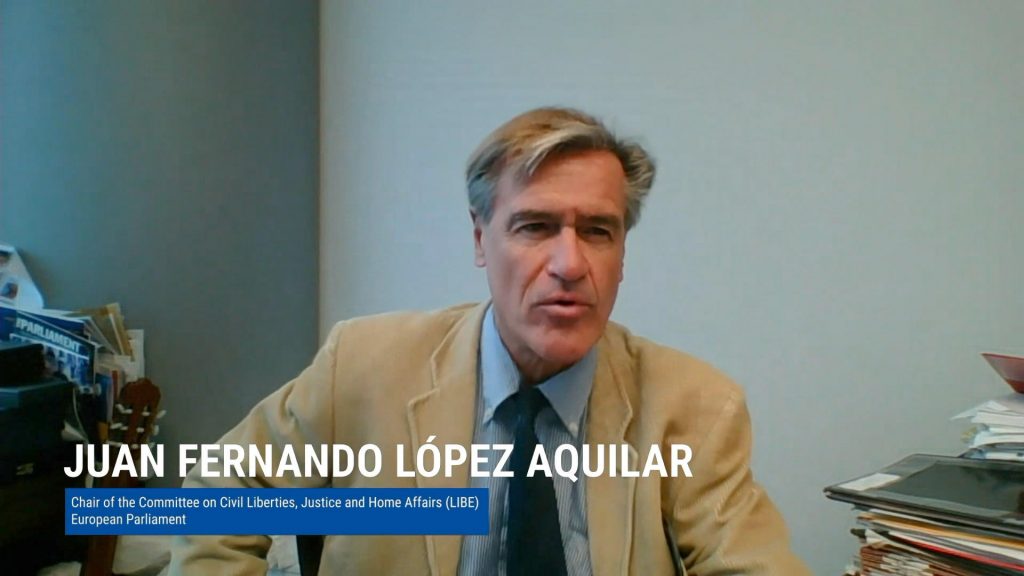
Mr López Aguilar explained the close cooperation between the European Parliament, the European Council and the European Commission on various aspects of digitalisation of Schengen. He emphasised the importance of adopting the interoperability package that had been entrusted to eu-LISA. It was crucial to ensure proper information exchange throughout the different EU databases for border management and security purposes. Mr López Aguilar stated that the European Parliament had tried to address legitimate concerns relating to data protection and fundamental rights, while also channelling a lot of attention on the importance of developing new AI-related technologies. These solutions had to be worked out with the highest possible level of transparency, taking into account shortcomings that had been discovered in other regions of the world. Mr López Aguilar concluded that the European Parliament was convinced that technologies should never replace human decision-making. For this reason, making certain types of decisions based solely on automated processes and letting machines take decisions that impacted individual rights were a matter of concern. The European Parliament was convinced that such judgements had to always involve meaningful human assessment, human oversight and human decision-making.
Mr Garkov greeted more than 450 participants who were following the conference live and explained that the topic ‘Towards the Digital Schengen Area’ was closely linked to both eu-LISA’s mandate and tasks as well as the challenging times of life during the pandemic. Freedom of movement in the Schengen area was an integral part of the European way of life, and eu-LISA’s role as the digital engine of Schengen was as important as ever. Delivery of the new information architecture for internal security was crucial, and Member States, eu-LISA and other Justice and Home Affairs (JHA) agencies should keep up the pace to implement the new interoperability architecture by the end of 2023. eu-LISA was tasked and committed to contribute to the implementation of the two overarching initiatives towards internal security in Europe: the EU Security Union Strategy and the Pact on Migration and Asylum. eu-LISA was one of the key agencies in the Security Union Strategy supporting the digitalisation of the JHA domain. The finalisation of the new version of the Schengen Information System (SIS) would take place soon. All stakeholders would have then have to continue to work hard, despite the complexity, towards the rollout of EES and ETIAS. Mr Garkov was pleased that the EU had proposed the Artificial Intelligence Act and was taking the lead in the development of the AI solutions, and confirmed that eu-LISA stood ready to contribute to this. Mr Garkov thanked the Slovenian Presidency of the Council of the EU for its contribution to the conference, and emphasised the importance of wide-ranging cooperation in achieving a digital Schengen area.
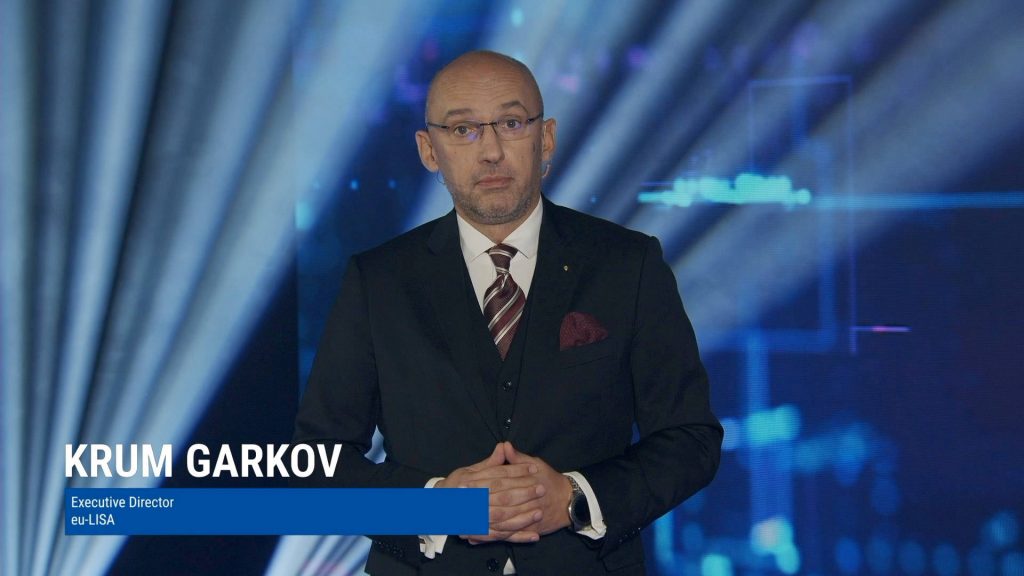
10.20 – 11.20
Panel I – Come Fly with Me
Lessons Learned from COVID-19
Opening presentation:
Mr Mohamed Rahma
Director of the Air Transport Bureau of the International Civil Aviation Organization (ICAO), Secretary of ICAO’s Council Aviation Recovery Task Force (CART)‘The air-travel after COVID-19’
Panel discussion:
Ms Nuria Fermoso
European Regional Manager, Passenger Experience & Facilitation, International Air Transport Association (IATA)
Mr Filip Cornelis
Director of Aviation, DG MOVE, European Commission
Mr Franck Le Gall
Head of Airport Operations, Groupe ADP (Aéroports de Paris) & Member of the ACI EUROPE Facilitation & Customer Services Committee
Mr Johannes Tralla
Moderator

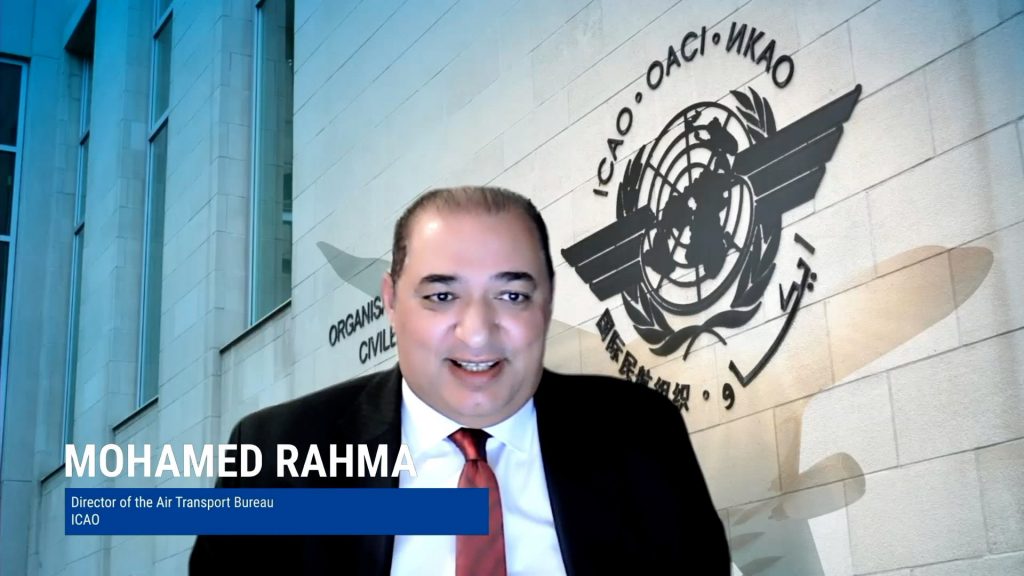
Mr Rahma offered perspectives from the international civil aviation community, highlighting the interconnectedness of the world that the pandemic had further accentuated. He explained that passenger air traffic had fallen back to almost the level it was 20 years ago. For the International Civil Aviation Organization (ICAO), one of the key takeaways was that the industry had to be rebuilt in a way that made it more sustainable and resilient to external challenges. Another lesson learned was the importance of international harmonisation and alignment of common standards and best practices in aviation operations. In this regard, Mr Rahma congratulated the EU for establishing a technical framework that elaborated technical specifications for health certificates, and argued for a greater global harmonisation. Mr Rahma noted that the EU Digital COVID Certificate (DCC) should be properly used internationally, moving towards allowing reciprocal recognitions of standards and health documents across the globe. The ICAO adopted a declaration on how speedier and safer contactless travel experiences could strengthen and restore passengers’ confidence in air travel. Mr Rahma stressed that it was also important to consider how new technologies could facilitate the development of frameworks for a more agile response to future crises, ensuring that states, agencies and the industry worked collectively on the solutions.
Ms Fermoso began by thanking the organisers and argued that the main challenges for the air travel industry were twofold. First was the patchwork of measures that had been implemented by states – it was a huge problem that these measures had not always been timely and properly communicated, neither to passengers nor to the industry. The second challenge concerned the bottlenecks that currently existed in the aviation system due to various additional checks, including health checks that were often not effectively managed. In Ms Fermoso’s opinion, part of the solution lay in creating a simplified risk management scheme that governments could use to manage the risk of COVID19. It was crucial not to allow the measures of combatting the pandemic to become permanent. Ms Fermoso explained that the vaccination and testing of travellers should be made as easy as possible, and that governments, not the travellers, should pay for the tests. Finally, Ms Fermoso advocated for the adoption of a digital process by governments for the management of health credentials, such as testing or vaccination. It was crucial that as many steps in the process as possible be moved out of the airport, to ensure reduced waiting time for passengers.
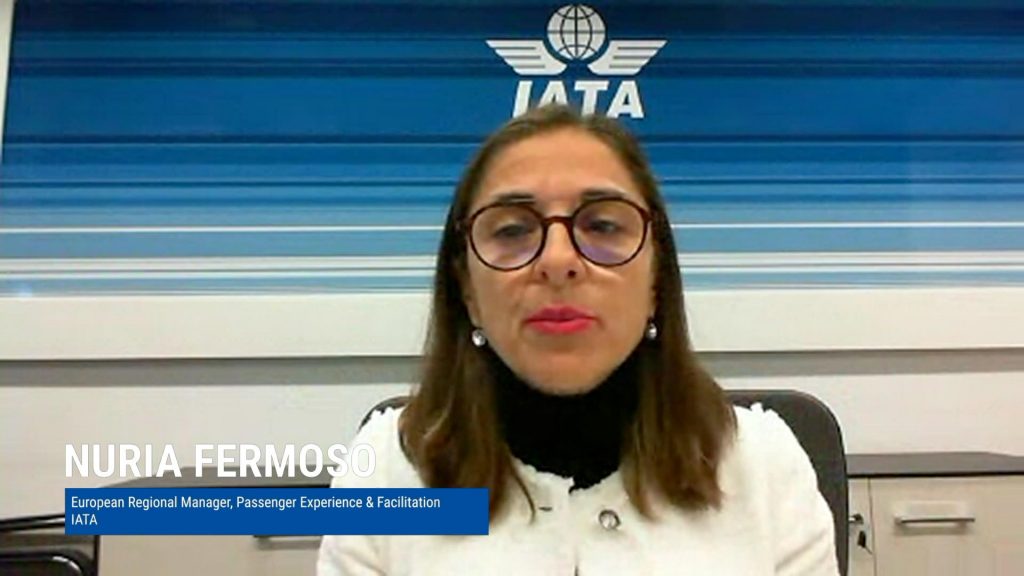
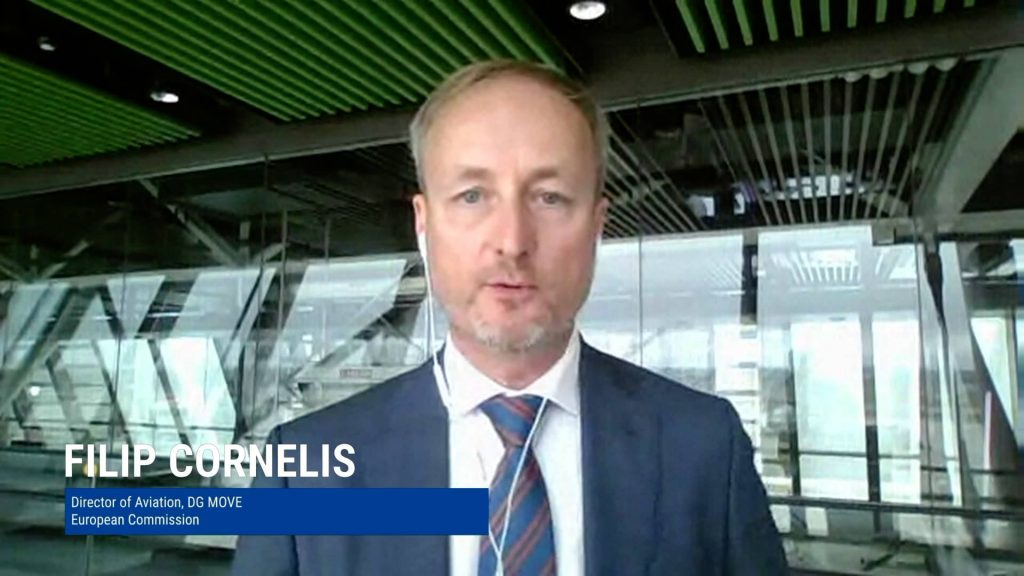
Mr Cornelis began by saying that even though some epidemiological measures that had been put in place gave confidence to passengers and the aviation sector was slowly climbing out of the deepest downturn of its history, a lot of work remained to be done. Even though the passenger numbers remained at around threequarters of normal levels, which was most likely to continue until next summer, and even with reduced numbers of passengers, there were delays at airports. Mr Cornelis highlighted the need to move towards a more streamlined, seamless and digitalised travel process. He explained that the creation of bottlenecks and delays at airports and the risk of passengers being denied boarding due to incomplete paperwork were extremely disruptive in the aviation sector, and such processes should be finished before passengers arrived at the airport. In this regard, the EU Digital COVID Certificate had been a game changer, and work was ongoing to make it available also outside the EU and its immediate environment. The Commission, aviation sector and third countries were cooperating in taking steps towards rolling out the digital certificate across the world.
In responding to the question on what had changed due to the COVID-19 pandemic and what long-term effects could be envisaged, Mr Le Gall explained that travelling as such would change – the journey had to become smoother as the expectations of travellers continued to rise. Some travellers had been very keen to undergo health checks, and if this helped to restore their trust, it had to be done by the industry and other stakeholders. Mr Le Gall also noted that COVID19 had been a trigger for speedier digitalisation, and it was crucial to work on harmonising digital services.
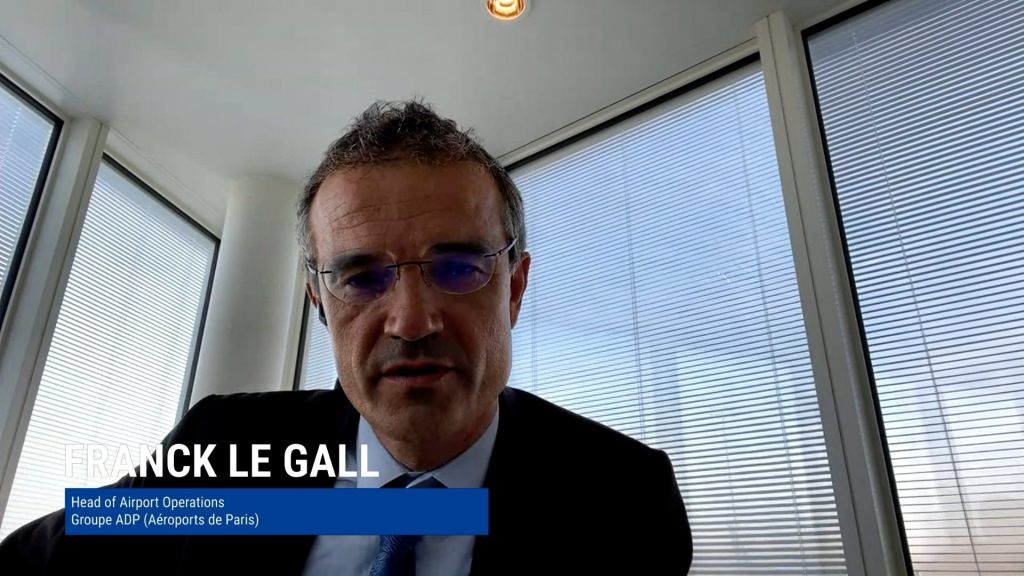
In responding to the question on how technology could help the aviation industry to comply with the new ETIAS regulations, Ms Fermoso reiterated the importance of not generating additional waiting time for passengers at airports. ETIAS implementation would benefit travellers and border control authorities alike. In Ms Fermoso’s opinion, an important area of work was the automation of the application acceptance and verification process, followed by the advance processing of the passenger information that airlines provided to the border control authorities. The central idea was reliance on an automated process as much as possible. Ms Fermoso also proposed the establishment of a 24/7 helpline for travellers to address any issue they were facing. This would help not only the aviation industry, but the entire ecosystem, including the border control authorities.
In response to a question on the preparedness of European airports for the implementation of the new IT systems, Mr Le Gall first explained that border control remained the responsibility of Member States. All the IT tools would be managed by Member States, not the airports. Mr Le Gall said that the current crisis had slowed down public and private investment in various travel-related infrastructures. Although the IT solutions had great potential, Mr Le Gall reminded the audience that passengers were real people, not virtual, and said that surely significant human resources would still be required. As had also been noted by previous speakers, Mr Le Gall stressed that it was crucial to implement ETIAS and achieve interoperability by the end of 2023.
Discussing the main lessons learned from COVID-19 and the future of travel restrictions, Mr Cornelis said that while any pandemic or major disruptive event would have an impact on international travel, we could do more to be better prepared for such scenarios in the future. The European Union Aviation Safety Agency (EASA) had led the creation of the COVID-19 Aviation Health Safety Protocol, which had been used by many states, and, on a voluntary basis, also adopted by air carriers and airports. With the EU Digital COVID Certificate, the Commission had taken the initiative to develop a whole new IT system from scratch, and this had turned out to be quite successful. This work had to be expanded by creating solutions such as producing a QR code for passengers, based on aggregate data, that would provide a guarantee that they would be able to arrive at their destination without any hiccups or additional checks.
Ms Fermoso further developed this idea, arguing that, purely from an information communications and technology perspective, the adherence to international practices on exchanging information was a must. When the whole process of an electronic travel authorisation system was performed automatically as well as electronically, we would achieve a solution that was truly contactless. This type of system, together with Advance Passenger Information (API) and Passenger Name Record (PNR) systems, should be integrated into the process, and this would mean that any interventions of border security or airport staff would be required only if there was truly a problem.
In responding to the questions from the audience, the panellists explained various aspects of EASA’s data safety program, integrating vaccination data into EU JHA large-scale IT systems, and including third countries in enrolment of the new systems. Mr Cornelis explained that the ‘Data for Safety’ project that EASA was developing was not linked to the operational environment of travel or passengers – it was aimed at the collection of flight data from aircraft and incident reports which would help in the analysis of that data, and the determination of trends and precursors which would help us achieve greater safety in the future. Mr Le Gall explained that integrating health data in large-scale IT systems was a sensitive issue, and its most problematic aspect related to storing the data. While accessing the data was generally not considered to be a problem, it was important to ensure that it would not have to be stored and that the system would ensure full respect of data protection rules, which were quite strict for health data. The rollout of EES and ETIAS was currently under way, and the Commission services and agencies were trying to learn along the way, to make the process as smooth as possible.
Poll:
Should the EU work towards contactless entry at border crossing points (BCPs) based on biometric data?
12.15 – 13.15
Panel II – Invisible Borders
The Next Generation Schengen Area?
Opening presentation:
Mr Fabrice Leggeri
Executive Director, Frontex‘The future of the Schengen Area – digitalisation and border management’
Panel discussion:
Mr Marko Gašperlin
Chair of the Frontex Management Board, Assistant Director of the Uniformed Police Directorate at the Slovenian Ministry of the Interior
Ms Nina Gregori
Executive Director, European Asylum Support Office (EASO)
Mr Luca Tagliaretti
Deputy Executive Director, eu-LISA
Mr Johannes Tralla
Moderator
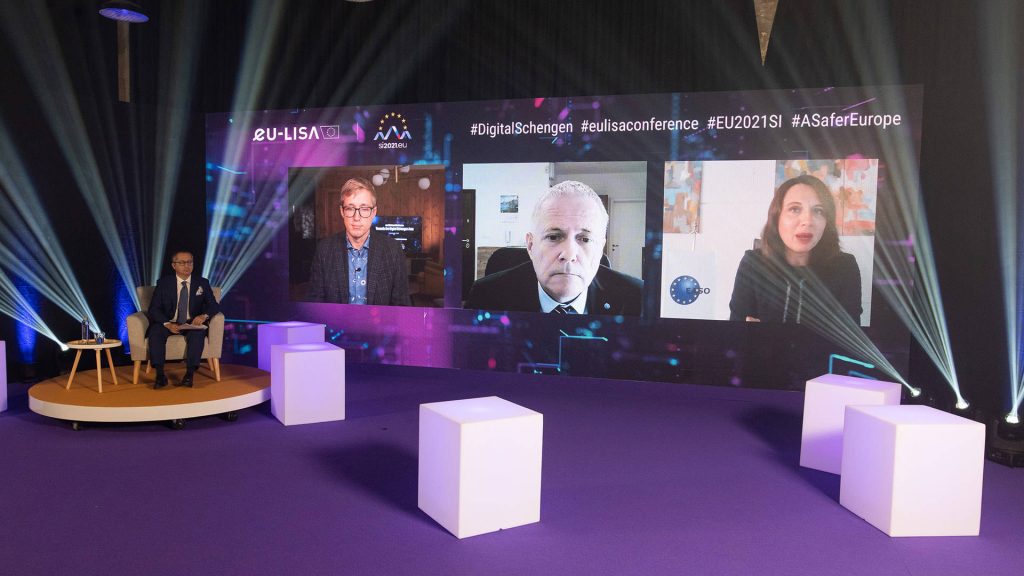
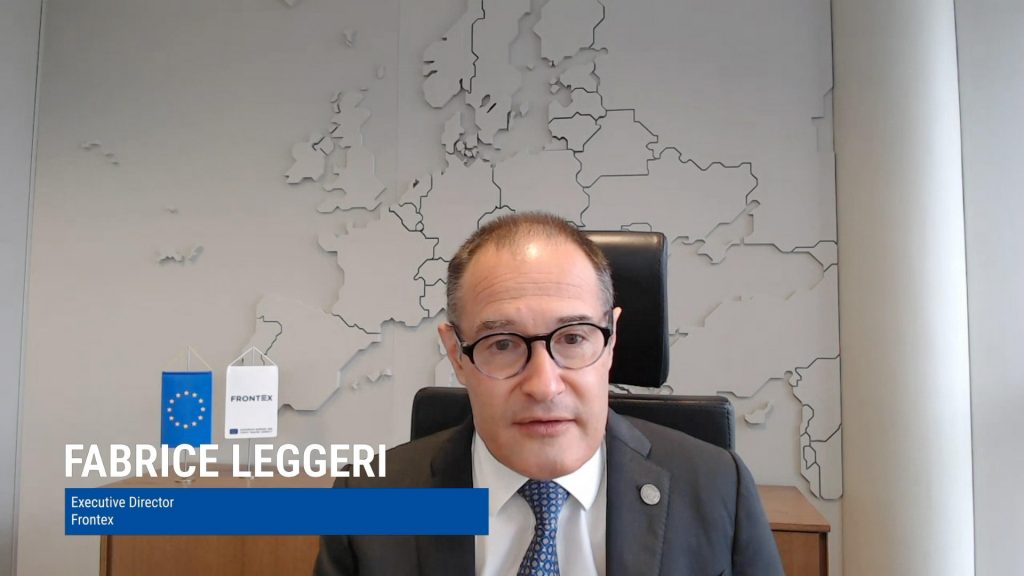
Mr Leggeri started the opening presentation by thanking eu-LISA and the other partners on behalf of Frontex, the European Border and Coast Guard Agency. The start of operations of the Entry/Exit System (EES) in 2022, followed by the launch of ETIAS, would be a major step forward in the modernisation of the Schengen area. Schengen could not be taken for granted, and we had learned lessons from the 2015 migration crisis and the more recent COVID19 pandemic. One of the lessons learned was the understanding that major digital transformation, which we had embarked on, was an absolute must if we wanted to continue to fully enjoy all the freedoms and advantages we had become used to. The EU had 1 892 official border crossing points, 644 of which processed more than 10 000 travellers per year, and they would all be connected to the EES. Frontex, in cooperation with eu-LISA, had developed and delivered tailored training on the EES for national border officers, and two pilot training programmes had recently started in Spain and Bulgaria. Mr Leggeri said that this undertaking could be successful only when all stakeholders were included and we formed public-private partnerships that included ICT service providers and airport and seaport operators and carriers. ETIAS would have a central unit in Frontex and national units in each Member State responsible for the processing of Travel Authorisation applications. ETIAS was also the first EU information system to be developed by eu-LISA endtoend, supporting a more harmonised implementation among all Schengen states. Mr Leggeri also highlighted the importance of the new Pact on Migration and Asylum, which helped make the system more effective in supporting the Member States in processing irregular arrivals at the EU external borders.
Ms Gregori was asked about the EU’s preparedness for the next migration crisis and the implications of such events at international political level. In explaining what we had to do in terms of ICT and asylum procedures in particular, Ms Gregori revealed that the answer lay in the combination of early warning systems and prevention. She noted that it would not be easy as we were already witnessing new hybrid threats from countries in the EU’s neighbourhood. With regard to asylumseekers, technical and political discussions were taking place at all levels, and several proposals had been made to make the system more efficient. Ms Gregori explained that the newly established European Asylum Agency (currently the European Asylum Support Office, EASO) that would become functional as of January 2022, would have certain tools that would really be very useful when dealing with crisis situations on the EU’s borders. In terms of ICT, the EU had had recent experience in providing large-scale operational support to certain Member States, and this had helped to improve the efficiency of such support as well as contingency planning and the use of remote ICT tools in the procedures and reception spaces.
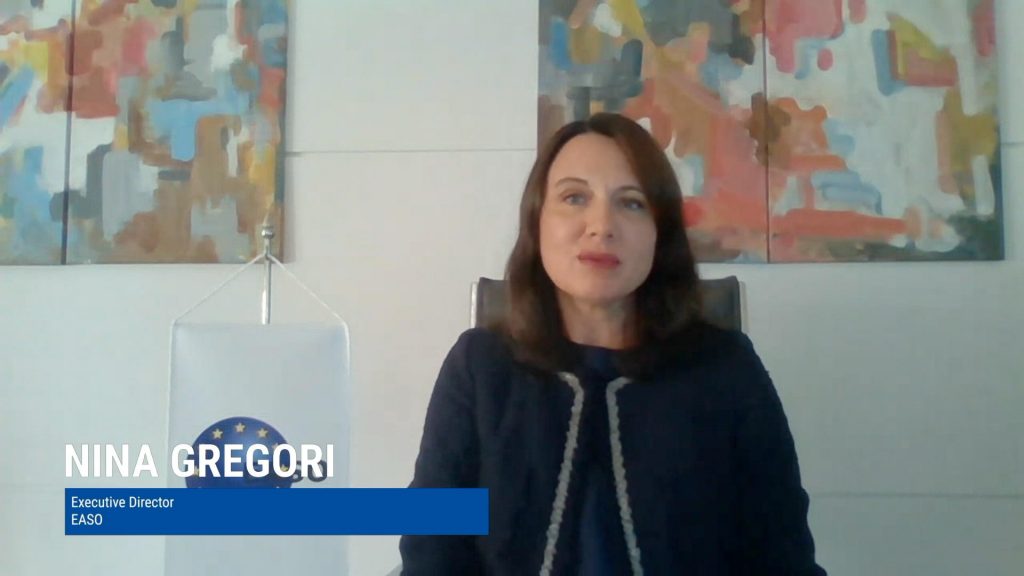
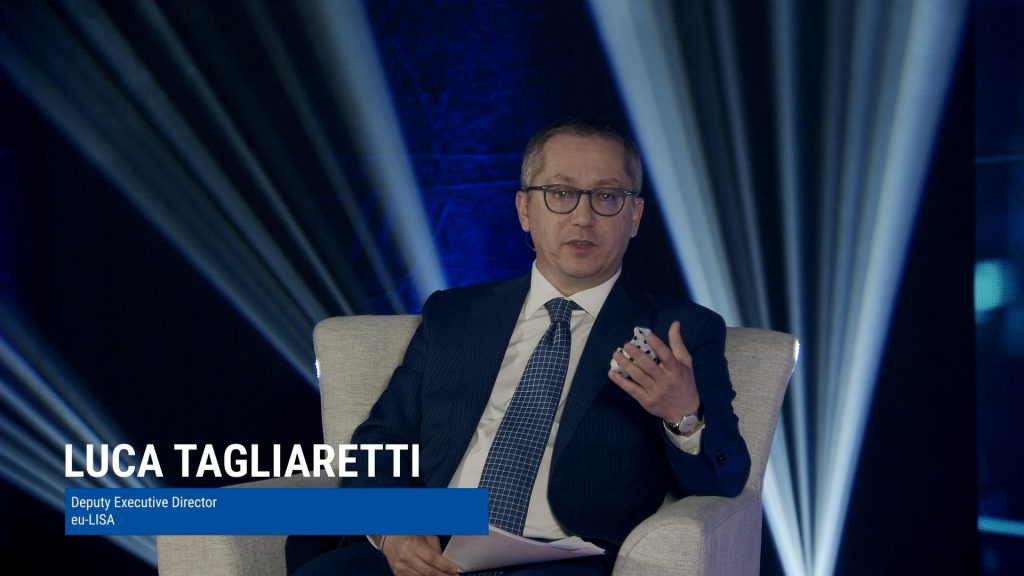
Mr Tagliaretti was asked about ICT developments that would help the EU be better prepared for the next migration crisis, and he highlighted the complexity and multidimensionality of this issue. Tackling it required a consistent European-wide approach, for which we currently had a solid base, even though the external situation, as well as technology, was everevolving. Digitalisation was one of the key components of a proper border management system and asylum system. Eurodac (the European Asylum Dactyloscopy Database) had been in use for a long time and needed to evolve and be upgraded as soon as possible as its technical implementation would take time. The aim was to obtain data that was complete and of good quality, as it could help us with various tasks, including predicting and minimising fraud.
Mr Gašperlin stated that the COVID19 pandemic had significantly changed the understanding of the functioning of the Schengen area. Before the pandemic, every border check at the internal border was met with criticism, as the Schengen idea was an area without any internal controls. With the outbreak of the pandemic, it became somehow understandable that we were being checked at the border and some borders had been closed down at times. Furthermore, EU Digital COVID Certificates were checked for almost every international and domestic flight. Mr Tagliaretti agreed that the pandemic had, in a way, changed our approach to many things. The crisis had also showed the importance of solidarity between Member States and how crucial it was to stick together in times of difficulty. Coming together as Europe made a difference in a way that no Member State would be able to achieve on their own. The EU Digital COVID Certificate that had been developed showed just how quickly Europe could deliver when there was a will. There was a huge amount of technology behind the certificate, not just the QR code.
Mr Gašperlin added that the EU Digital COVID Certificate was an excellent example of how modern technology could help us solve problems, and we could very quickly agree on a legal basis, as well as the implementation of a new solution. It was important that travellers would not have to carry a heavy administrative burden, and that digital solutions, which were often mobile-based, would give them confidence that their documentation was complete and that they were able to travel.
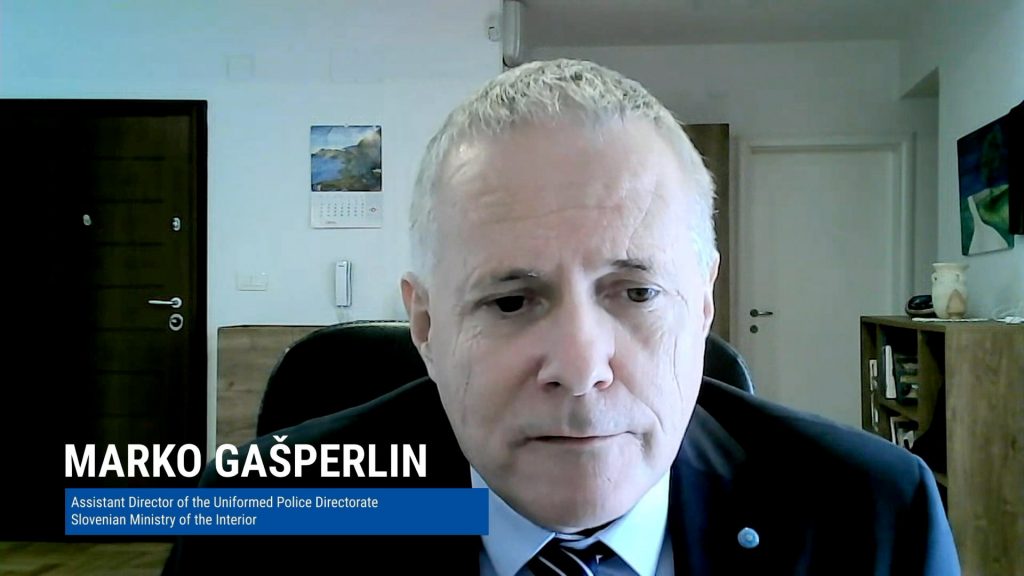
In responding to a question about how the new Eurodac would improve the efficiency of asylum management in the EU, Ms Gregori explained that it would have a significant impact. The data from the relevant systems could allow us to have an on almost realtime view of the situation. The new Eurodac would allow us to see when an asylumseeker had already applied or stayed in another Member State, which would then have consequences on how their application was dealt with elsewhere. Mr Gašperlin added that the digitalisation of border systems would be useful in border surveillance, border checking, and in establishing settlements at the border. All of these areas needed attention, and even if border checks were performed quickly, we could not afford long delays in identifying immigrants and performing other similar procedures. Ms Gregori highlighted the remote processing of data as another activity that had become particularly relevant during the pandemic, but was here to stay. There had been progress on this and, currently, EASO was supporting the Lithuanian asylum system partially remotely from Greece.
There was a question from the audience regarding the use of AI tools in predicting migrant flows and conducting other similar analyses. Mr Tagliaretti said that these processes were, indeed, completely changing, and we were embarking on a transformational journey which would require a 360-degree approach. Currently, the data was not being used for such predictions, but there was a lot of potential in conducting AI analyses in the future. Mr Tagliaretti responded to another question from the audience, confirming that the legal requirements of the General Data Protection Regulation (GDPR) would be guiding the development of these systems, and there would be enough safeguards in place that would ensure personal data protection.
A question regarding how to ensure the smooth implementation of modern technologies at the border was first taken up by Mr Tagliaretti. He explained that technology was just one pillar of the implementation: communication, adequate training and further success in standardisation were also very important. Altogether, a smooth implementation presupposed cultural change. Mr Gašperlin explained that capturing biometrics in real-life during the border crossing procedure was also defined as a big challenge by lawmakers. It had to be considered how this could be done prior to arrival at border crossing points. Mr Gašperlin concluded by saying that, in linking theory to practice, it would be crucial to listen to the practitioners and ensure that the fundamental rights of data protection were well protected.
Poll:
Do we need a standardised EU digital solution for collecting vaccination information from passengers travelling to the EU?
13.20 – 14.20
Panel III – New Travel Intelligence
How Digitalisation Could Contribute to security?
Opening presentation:
Ms Catherine De Bolle
Executive Director of Europol‘How could AI contribute to internal security?’
Mr Aleksander Pur
Ph.d., Senior Police Superintendent, IT and Telecommunications Office, Slovenian Ministry of the Interior‘Practical application of AI in the area of law enforcement’
Panel discussion:
Mr Dragoș Tudorache
MEP, Chair of the Special Committee on Artificial Intelligence in a Digital Age, European Parliament
Mr Matthias Oel
Director for Schengen, Borders and Innovation, DG HOME, European Commission
Mr Saâd Kadhi
Head of the permanent Computer Emergency Response Team (CERT-EU) for the EU institutions, agencies and bodies
Ms Anne-Charlotte Nygård
Head of Technical Assistance and Capacity Building, European Union Agency for Fundamental Rights (FRA)
Mr Johannes Tralla
Moderator
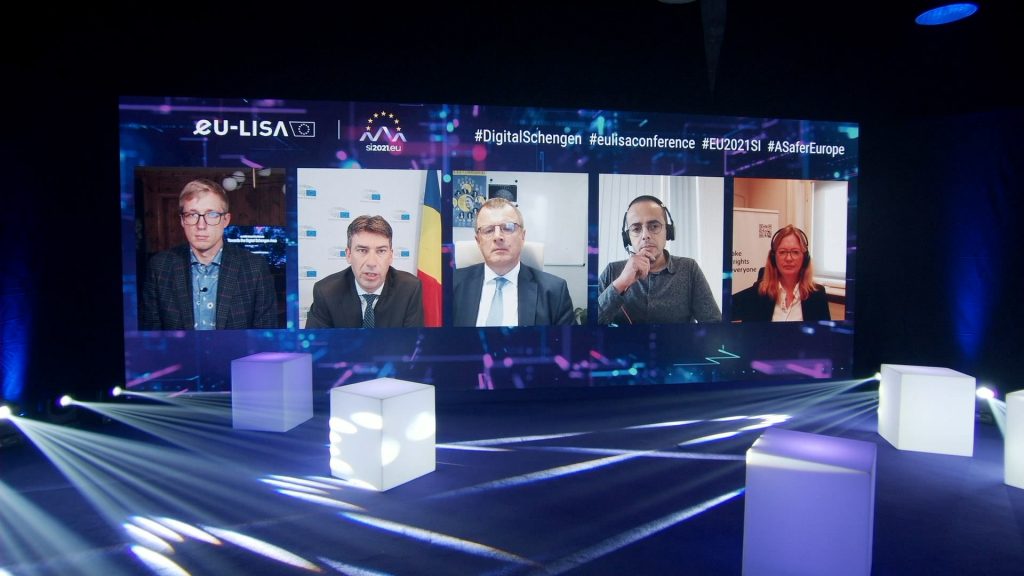
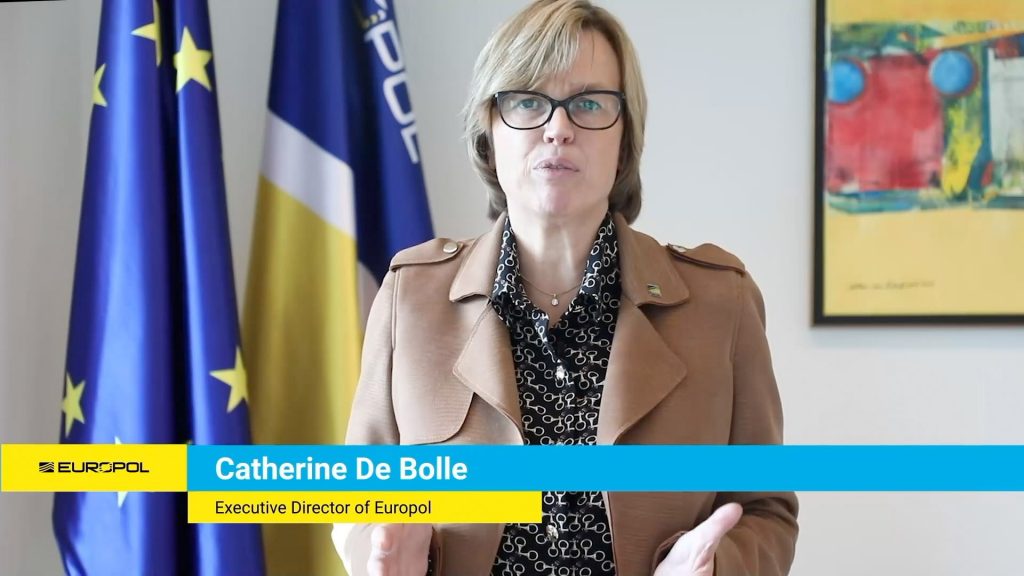
Ms De Bolle started her presentation by saying that law enforcement across Europe was confronted with increasingly complex investigations with a high volume of diverse data. According to Ms De Bolle, law enforcement had to be able to use innovative tools, such as AI and machine learning to support the swift handling and processing of large datasets, particularly in the future as the amount of data and its complexity continued to grow. Europol had in place a solid and tested environment with oversight procedures that helped to uphold the rights of every citizen as a high priority. The Europol Innovation Lab played a crucial role in coordinating the activities of EU funded projects to develop AI and machine learning tools based on the tools for EU law enforcement. With the EU Innovation Hub, Europol participated in projects to address citizens’ mistrust of the use of AI by law enforcement and judicial authorities. It was crucial to develop common standards and policies for law enforcement in the digital age and operate within a regulated governance framework with transparency and trust, including through adequate engagement with technology providers.
Mr Pur explained that, in general, AI brought new opportunities for law enforcement to improve public security. On the other hand, unethical and illegal use of AI brought new threats, such as fake autonomous weapons and other tools that could increase the threats organised crime and terrorist groups could pose to societies. In Mr Pur’s opinion, a central idea regarding AI was that we needed to put more effort into understanding it and into being able to distinguish between risky and riskfree implementation of AI. We had to be careful not to create ‘black boxes’ without any explanations. However, we should make use of AI techniques that were transparent and helped us better ensure public security.
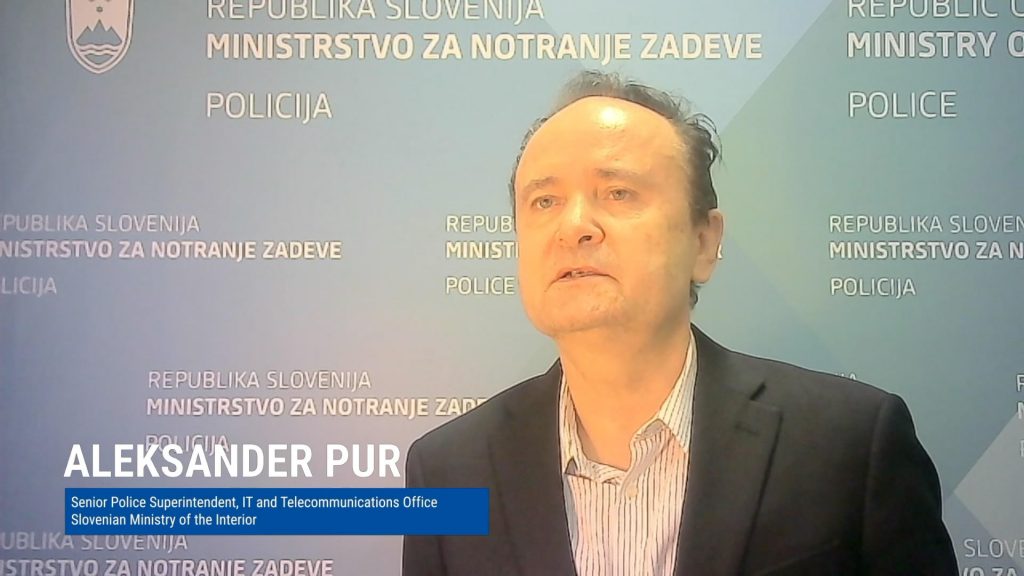
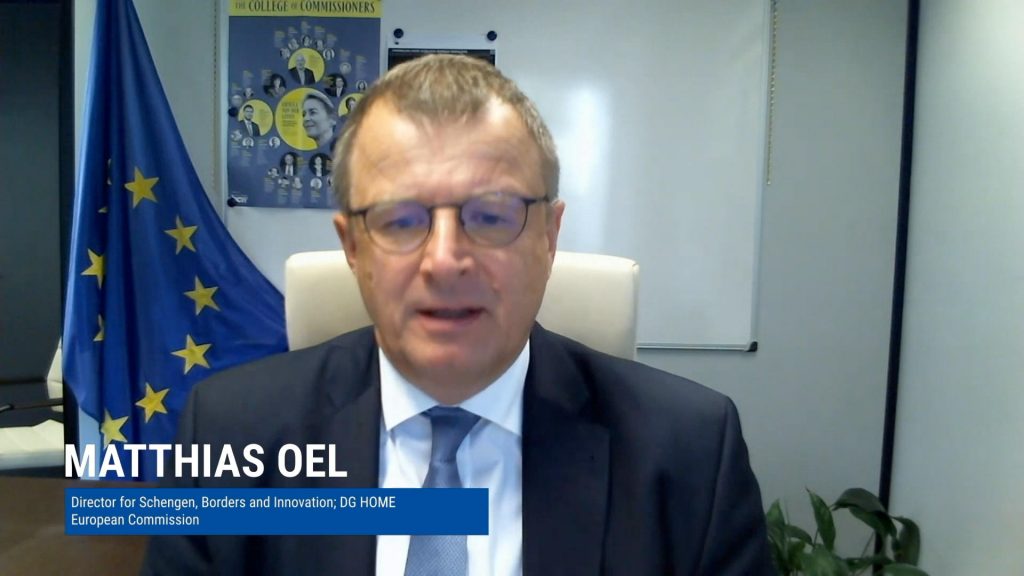
Mr Oel defined AI as a tool to be used, not a policy to be implemented. Mr Oel considered that, for society as a whole, building up trust was the most important political challenge for the introduction of AI. In the Justice and Home Affairs (JHA) agencies’ network, AI gave an opportunity for automating important tasks, but there was also the need to assess and mitigate risks regarding data protection concerns.
Ms Nygård said that digital technologies and AI were an absolutely indispensable tool for everyday law enforcement and police work. At the EU Agency for Fundamental Rights (FRA), AI had been looked at for several years. FRA had recently published a report on intelligence and fundamental rights, which dealt with artificial rights more broadly than just security and borders. They had also studied data quality, Big Data, non-discrimination, facial recognition technology and the prevention of unlawful profiling. It was important to consider the risks relating to automation bias or repeated patterns of historical discrimination, as well as the emotional state of the personnel when assessing any risks.
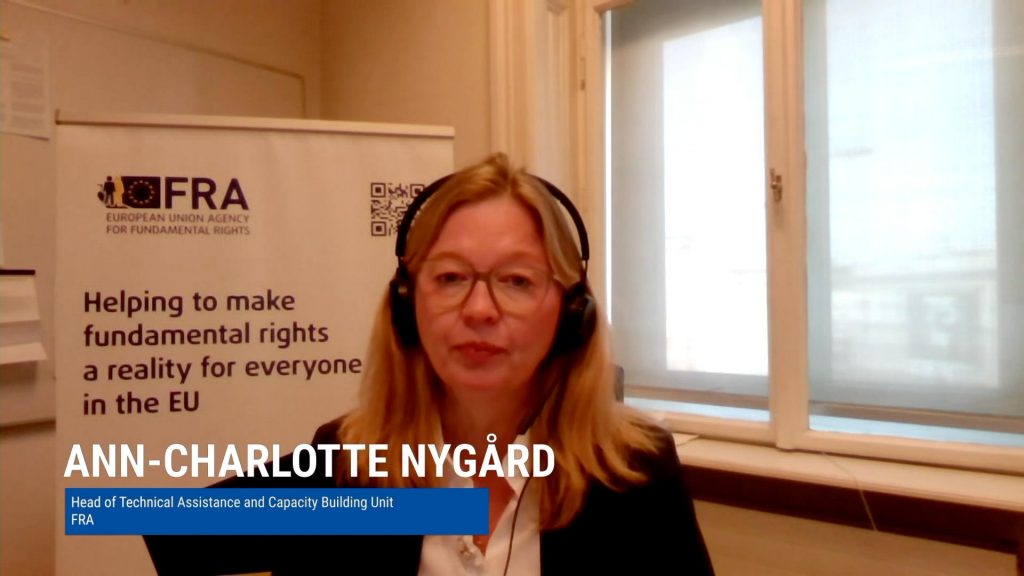
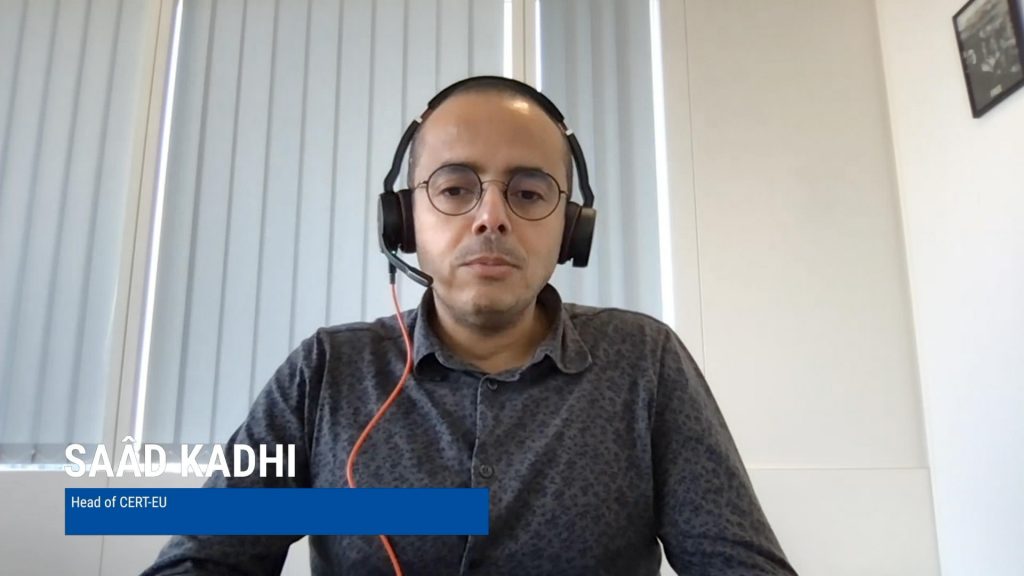
Mr Kadhi distinguished machine learning, deep learning and natural language processing as three AI areas of work, explaining that he would talk about the mix of all three and how it impacted our security. Mr Kadhi explained the ways in which employing AI solutions could be a blessing, noting that it could also do a lot of harm, particularly when used in a way in which algorithms were pitted against one another. Despite all the progress achieved, AI was not independent from the old vulnerabilities and our flaws as human beings.
Responding to a question about whether we needed AI regulation in the EU, Mr Tudorache explained that we really did, however not only in the EU but worldwide. Law enforcement officers and many other parties could not work in the absence of legal certainty. Mr Tudorache said that the pandemic had accelerated this process, we spent a good part of our lives online, and we already had quite a lot of AI in our lives. In starting to create the legislation, the EU had taken a human centric approach that focused on the interests of the individual, which was in line with our core beliefs. Therefore, the rules had to be in place, but law enforcement and other fields needed AI in order to make our societies safer.
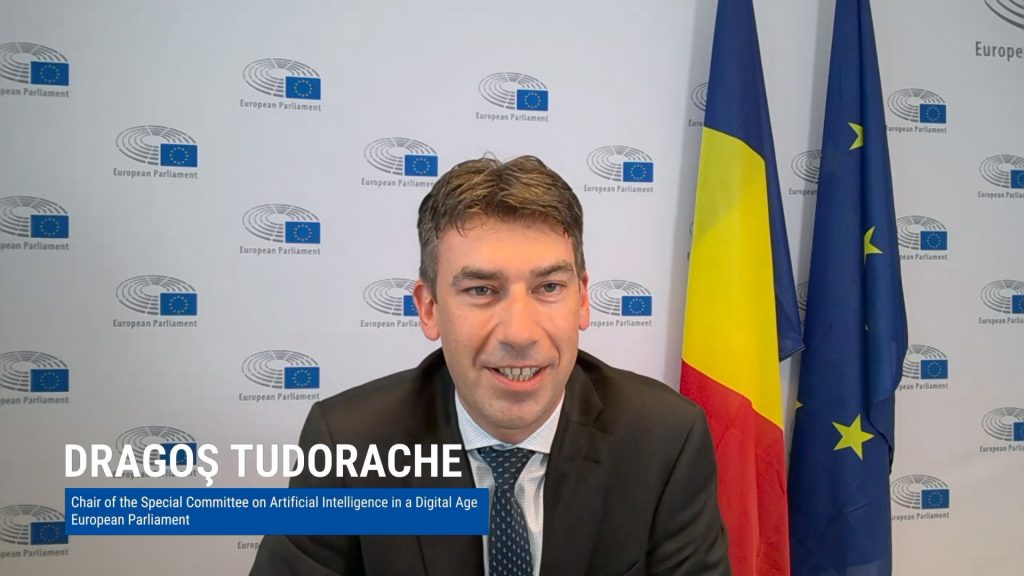
Mr Oel was asked whether a separate regulation for law enforcement and justice matters was needed or whether just a general EU regulation in the EU would be sufficient. Mr Oel explained that we needed a robust legal framework that would help create the trust we needed among people and law enforcement authorities to truly embrace AI. In Mr Oel’s opinion, the horizontal legal proposal that the Commission had presented was the right approach, as the challenges were similar across all sectors and the focus should be on facilitating the use of AI in a transparent, reliable and secure way. eu-LISA’s responsibilities, including the implementation of the EES and ETIAS and interoperability, were not affected by the AI-related proposal.
Responding to the same question, Ms Nygård agreed that there was a global need for further regulation of AI, and stated that the EU should be at the forefront of leading it. The proposal distinguished between high-risk cases and those where the risk was smaller – the checks and balances had to be in place.
Mr Tudorache received a question from the audience asking whether the regulation should apply the same rules to AI in the private sector as for the AI used in law enforcement. Mr Tudorache said that his suggestion was to avoid sectoral approaches and a horizontal regulation with a risk-based approach would serve us better.
Responding to the question about how we kept AI regulation up to date, took into account future developments and acquired knowledge, Mr Kadhi explained that this was very difficult as the field moved on extremely quickly. The Commission had taken the risk-based approach, which made sense, but it was important to note that risks were also everevolving. There was currently no very good answer to that question as it was difficult to create something that would be ‘futureproof’.
Mr Oel was asked whether a separate regulation for law enforcement and justice matters was needed or whether just a general EU regulation in the EU would be sufficient. Mr Oel explained that we needed a robust legal framework that would help create the trust we needed among people and law enforcement authorities to truly embrace AI. In Mr Oel’s opinion, the horizontal legal proposal that the Commission had presented was the right approach, as the challenges were similar across all sectors and the focus should be on facilitating the use of AI in a transparent, reliable and secure way. eu-LISA’s responsibilities, including the implementation of the EES and ETIAS and interoperability, were not affected by the AI-related proposal.
Responding to the same question, Ms Nygård agreed that there was a global need for further regulation of AI, and stated that the EU should be at the forefront of leading it. The proposal distinguished between high-risk cases and those where the risk was smaller – the checks and balances had to be in place.
Mr Tudorache received a question from the audience asking whether the regulation should apply the same rules to AI in the private sector as for the AI used in law enforcement. Mr Tudorache said that his suggestion was to avoid sectoral approaches and a horizontal regulation with a risk-based approach would serve us better.
Responding to the question about how we kept AI regulation up to date, took into account future developments and acquired knowledge, Mr Kadhi explained that this was very difficult as the field moved on extremely quickly. The Commission had taken the risk-based approach, which made sense, but it was important to note that risks were also everevolving. There was currently no very good answer to that question as it was difficult to create something that would be ‘futureproof’.
Mr Oel took the question regarding how the different EU agencies could cooperate in the AI domain, explaining that the cooperation had already started, but that it was not yet very visible. First and foremost, it was a matter of having common goals across the agencies, sharing resources and combining staff in real projects. The agencies had a role in what the Commission called the ecosystem of excellence and the ecosystem of trust, as both were indispensable for ensuring the broadest uptake of AI technology. Expertise in this field was rather scarce in public administration at the moment, and therefore administrators needed to define new ways of cooperation with external parties in the fields of research and academia, as well as in the private sector. This work was ongoing, and cooperation was paramount in making progress in the future and creating synergies.
Poll:
Should eu-LISA be entitled to use anonymised data for AI studies and prototypes?
14.20 – 14.35
Wrap-up
Towards the Digital Schengen Area
Mr Dragoș Tudorache
MEP, Chair of the Special Committee on Artificial Intelligence in a Digital Age, European Parliament
Mr Krum Garkov
Executive Director, eu-LISA
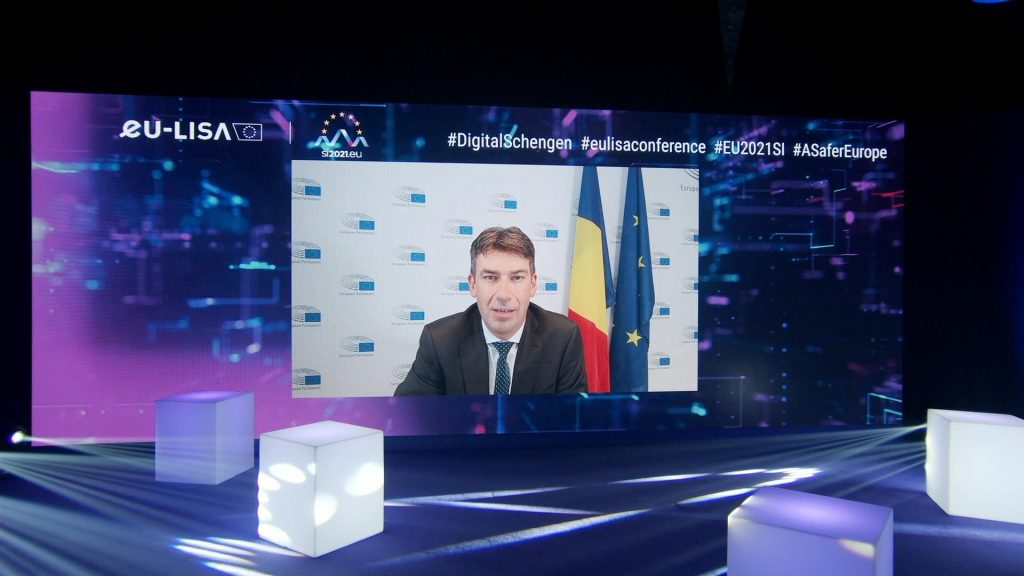
In his concluding remarks, Mr Tudorache thanked eu-LISA for the successful conference on a crucial and timely topic, noting that it was important to continue these discussions over the next year or two. This was the timeframe in which the European Parliament, together with the European Council, should be able to wrap up the negotiations and adopt the legal texts. Mr Tudorache underlined that the EU had sent a very important political message to the other global players on the digital scene, making it clear that we were currently undergoing a digital transformation and needed new rules. The EU had to stay at the forefront of this effort, but work together with partners that shared its values and principles. In terms of law enforcement, Mr Tudorache said that injecting high-end research and development into digital technologies and AI was something we could not afford not to do. Mentioning the new legal framework for Europol and the role of eu-LISA in helping to develop potential AI projects, Mr Tudorache stated that very solid safeguards were needed – society had to trust these new solutions and be confident that their freedoms would be protected and that these tools would not be abused. Mr Tudorache concluded by emphasising the importance of developing technologies and defining the rules simultaneously – only this would help the EU move forward in protecting our values, while ensuring our economic competitiveness.
Mr Garkov summarised the three main takeaways from the conference, the first being the need to continue these discussions in different forums, while also taking action, since the digitalisation of Schengen required a great deal of effort. Mr Garkov underlined the need to integrate all stakeholders into the Schengen ecosystem, ensuring a broad and comprehensive information exchange. The digitalisation of Schengen was not a technical exercise, and its success presupposed the collective development of a digital mind-set that embraced the wide range of possibilities, while appreciating our ethical and moral standards. Mr Garkov summed up the first panel discussion by saying that full implementation of the EES and ETIAS would have a direct impact on the travel industry, and it was crucial that Member States enhance their cooperation with industry representatives to ensure smooth integration into the new Schengen digital ecosystem. Similarly, his main conclusion from the second panel discussion was the importance of coordinated efforts by all parties to ensure the achievement of a new qualitative level. In terms of AI developments, Mr Garkov stressed the importance of the EU in taking the lead, because if it did not, markets or someone else would do it themselves. Two crucial aspects here were the creation of a flexible common AI legislative framework at EU level and ensuring that the right safeguards were in place to protect the privacy and fundamental rights of citizens and have them trust the system. Mr Garkov thanked all Member States and EU institutions and partner agencies for their support and cooperation, and invited everyone to the conference in 2022, which would mark the 10th anniversary of eu-LISA.
